DBMS and RDBMS are software used in order to store data in the physical database within which they are tasked to manage. Initially, the stored data is of a structured format where the information allows the database to be beneficial in storing, managing, and retrieving the information when needed.
Even though these systems are similar in some ways, there are several differences between DBMS and RDBMS. Before the generated data had to be stored and organized in the tapes technology which is very rare nowadays. The use of tape-based storage had several disadvantages among which the data’s inability to be reread. As a result, a database was introduced due to the need to resolve this issue.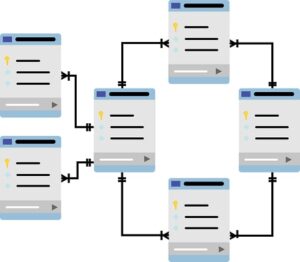
At present, the database witnessed major growth and proved to be an indispensable solution for the data storage according to the needs.
Evidently, the need for a robust way to manage these databases reared and led to the birth of both DBMS and RDBMS. Although these two seem very similar to beginners in the domain, this article presents mainly 13 differences between DBMS and RDBMS.
What Is DBMS?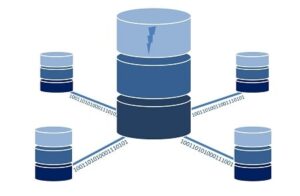
It is the abbreviation of Database Management System which is a software that used to develop and maintain the database. This system was introduced in the 1960s to store any data. In general, using this system enables the users and/ or programmers to have access to the essential tools for creating, managing, updating, and retrieving data. In addition to the ability to develop, updating, and modifying data, this system provides access to multiple features in order to make the work easier for the database.
For the most part, the main focus of this system is to develop and maintain data enabling the business to extract the needed information. As a matter of fact, it is a beneficial method for providing a centralized data view, which a variety of users can access from several locations in a controlled manner. In addition to that, the developers can limit access to the users according to the requirements and needs.
What Is RDBMS?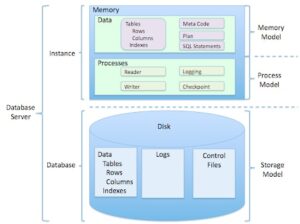
It is the abbreviation of Relational Database Management System which was introduced by E.F.Codd in the 1970s. Essentially, it is an advanced version of the DBMS system as it allows the organization to access data more efficiently than DBMS. This software system is used to store the data that requires the use of tables form. This means that the data here is managed and stored in columns and rows which is known as attributes and tuples.
In addition, it can be defined as the cluster of programs that allows the IT teams not only to develop, modify, and control a relational database but also to boost up the interaction between such databases. On that account, the structure of this database is created in a unique way that facilitates data access.
The Key Differences Between DBMS and RDBMS
Now that the reader is familiarized with the definitions and functions of both RDBMS and DBMS, we can highlight a list of the key differences between DBMS and RDBMS in the following:
-
Storage Type
In DBMS, the data is stored as a file either in the navigational or hierarchical formats. On the other hand, RDBMS stores information in tables; i.e., uses the tabular format where the headers construct column names, and the corresponding values are included in the rows.
-
Data Redundancy
Since the DBMS software stores data in form of a file, data can be repeated which increases the level of redundancy; whereas RDBMS data stored in a table format helps to handle a large amount of data without having redundancy due to the indexing present. It should be noted that in order to remove data redundancy, software needs to use normalization.
-
Data Normalization
In general, normalization is the process of arranging the entire data set in a database to avoid data redundancy. Unlike DBMS, this process is present in RDBMS.
-
Modification of Data
Considering the fact that DBMS has data redundancy, it is extremely difficult to modify the data at all the locations. That is to say that if we make changes at one location and forget to do so at other places, then there will be two different values for the same data. However, in RDBMS, there is negligible data redundancy as it supports integrity constraints; therefore, it is easy to make the changes. This means that when we make the changes in one place then the work is done as it automatically changes the value for that one data.
-
Number of Users
DBMS data elements can only be used by one individual user, whereas RDMBS Data elements are easily accessed by multiple users using SQL queries. These data elements can be accessed at any given instance of time.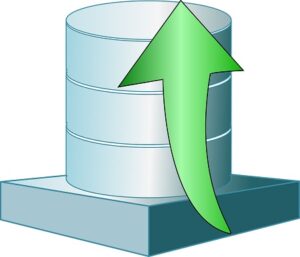
-
Data Quantity
Since DBMS supports single users only, it is used to store the small quantity of data and thus is used by small organizations. Nonetheless, RDMBS supports multiple users therefore it is designed to handle a huge amount of data and preferred by large organizations.
-
Data Fetching
In general, data is accessed faster in RDBMS than in DBMS. Particularly, rapid data fetching is possible because RDBMS provides a tabular structure for storing data using the relational approach. The latter makes the data retrieval process way faster. In DBMS, data fetching is slower since it does not offer a uniform method to access the information.
-
Hardware and Software Requirements
DBMS is usually lighter in its hardware and software requirements than RDMBS. This means it has Low software and/ or hardware necessities. Meanwhile, in order to run RDMBS effectively, users need a more powerful machine; i.e., Higher software and/ or hardware necessities.
-
Data Security
There are multiple levels of data security in RDBMS to ensure proper security of data while maintaining the required integrity constraint which supports ACID properly. Nevertheless, the data in a DBMS do not follow any proper security which makes it subject to low-security levels regarding data manipulation.
-
Database Distribution
DBMS does not support distributed databases while RBMS provides support for distributed databases.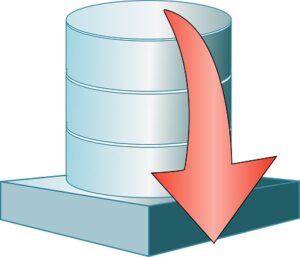
-
Data Relationship
In DBMS, the data is stored in a way where there is no relationship established between data. Comparatively, RDBMS’ data is stored in the form of tables that are related to one another with the aid of foreign keys in order to maintain the information relationship.
-
Adherence
DBMS adheres to nearly 7 Dr. E.F. Codd Rules; whereas RDBMS adheres to 8 to 10 Dr. E.F. Codd Rules.
-
Examples
some of the file systems of DBMS are XML, Microsoft Access, etc. On the other hand, RDBMS’ common examples are MySQL, PostgreSQL, SQL Server, Oracle, etc.
- Also, check Data Generalization in Data Mining.
All in all, digital data is key information in the current electronic platform for any field of business or service. On that account, storing data can be done in many ways while maintaining the same approach preferred in data fetching from several resources. Henceforth, a proper understanding of the differences between DBMS and RDMBS is necessary for business.
